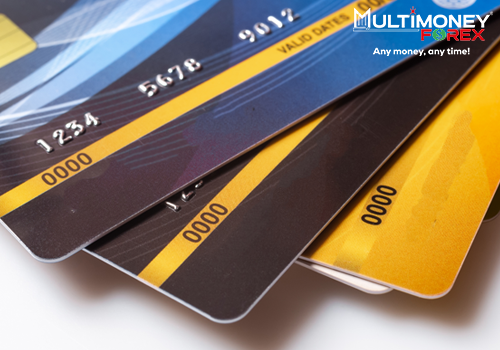Whether you’re going on a vacation or a business trip, managing foreign currency is important. That’s where forex cards come in—these are prepaid travel cards loaded with foreign currency.
But which one should you choose?
There are two types: multi-currency and single-currency cards. Each has its features, pros, and cons. Choosing the right one can help you save money, time, and avoid travel hassles.
In this guide, we’ll explain the difference between the two, compare their advantages, and help you decide which one suits your travel needs best.
What Is a Forex Card?
A forex card is a prepaid card issued by banks or currency exchange services that allows travelers to load, carry, and spend money in foreign currencies. It works like a debit card but is designed specifically for international use.
Forex cards come in two primary types:
- Single Currency Forex Card
- Multi-Currency Forex Card
What Is a Single-Currency Forex Card?
A single currency forex card allows you to load only one foreign currency, such as USD, EUR, GBP, or AED. It is ideal for travelers visiting just one country during their trip.
Pros of Single Currency Cards:
- Better exchange rates for the loaded currency
- Lower issuance and maintenance fees
- Simpler to manage (no currency juggling)
- Best for short trips to a single destination
Cons:
- Not usable in countries with different currencies without cross-currency charges
- Not ideal for multi-country travel
- Risk of higher costs if the card is used outside the loaded currency zone
What Is a Multi-Currency Forex Card?
A multi-currency forex card lets you load multiple foreign currencies on a single card, such as USD, GBP, EUR, SGD, AUD, and more. Some cards support up to 20+ currencies at once.
Pros of Multi-Currency Cards:
- Ideal for multi-country travel
- Avoids cross-currency charges when spending in supported currencies
- Offers better control over the budget across destinations
- Can be reloaded online with the currency you need
Cons:
- May have slightly higher issuance or annual fees
- Managing balances across currencies can be tricky
- Exchange rates may differ per currency
Key Differences: Multi-Currency vs. Single-Currency Forex Card
| Feature | Single Currency Card | Multi-Currency Card |
| Currencies Supported | Only one | Multiple (up to 20+) |
| Best For | Visiting one country | Multi-country travel |
| Cross-Currency Charges | High if used in unsupported zones | Avoided when used correctly |
| Exchange Rate Benefit | Fixed for that currency | Fixed per currency when loaded |
| Card Management | Simple | Requires tracking multiple balances |
| Fees | Generally lower | Slightly higher (depending on the provider) |
When Should You Choose a Single-Currency Forex Card?
Opt for a single currency forex card if:
- You’re traveling to one country (e.g., the USA or the UK)
- You want a simple, low-maintenance solution
- You don’t want to manage multiple currencies
- You have a short trip or a single-destination itinerary
When Is a Multi-Currency Forex Card a Better Choice?
Go for a multi-currency forex card if:
- You’re visiting multiple countries
- You want to avoid cross-currency charges
- You travel frequently for business or leisure
- You want convenience and flexibility on the go
Important Tips When Using Forex Cards
- Always load the currency of the country you’re visiting
- Avoid choosing to pay in INR or your home currency abroad (to prevent dynamic currency conversion charges)
- Monitor your spending via the linked mobile app
- Keep a backup payment method in case of card issues
- Check the card’s ATM withdrawal fees and limits in advance
Both multi-currency and single-currency forex cards offer secure and efficient ways to carry money abroad. The best choice depends on your travel destination(s), budget, and spending preferences.
- For single-country trips, a single currency card is cost-effective and easy to use.
- For multi-country or frequent travel, a multi-currency forex card gives you more freedom and better financial control.
Take time to compare providers, check for hidden fees, and load your card when exchange rates are favorable.
FAQs:
Q1. Can I use a single currency forex card in another country?
Yes, but you’ll be charged cross-currency conversion fees, which can be as high as 3–5% per transaction.
Q2. How many currencies can a multi-currency card support?
Depending on the issuer, a multi-currency forex card can support 10 to 25+ currencies.
Q3. Is it safe to use forex cards abroad?
Yes. Forex cards come with chip-and-PIN security, and most providers offer 24/7 customer support to block or replace a lost/stolen card.
Q4. Can I reload my forex card while I’m abroad?
Absolutely. Most cards allow online reloading via net banking or mobile apps. Reload times can vary from instant to a few hours.
Q5. Do forex cards expire? What happens to the unused balance?
Yes, forex cards usually have a validity of 3–5 years. Unused funds can either be refunded to your account or kept for your next trip.


